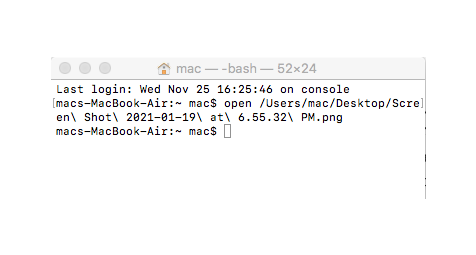

…after the last CFBundle statement in ist file, where iconfile is the name of the. I’ve tried adding lines like: CFBundleIconFile icns icon to the package, and know that it’s there by seeing it in the application’s Resources folder and see an entry for it in the application’s Contents/ist file. But for deployment reasons, I would like to add a. I appreciate the ability to copy & paste a custom icon into the selected icon in the new application’s “Get Info” dialog box. HTML, CSS, JavaScript, Unicode, performance, and security get me excited. I work on Chrome DevTools and the V8 JavaScript engine at Google. Got any nice ideas? Let me know by leaving a comment! About me Just to give another example, you could very easily create an app that minifies all JavaScript and CSS files in a specific folder. Needless to say, the possibilities are endless. Python -m SimpleHTTPServer 8080 &> /dev/null & After appifying it, you won’t even need to open the terminal for it anymore. The following shell script will use Python to launch a local web server from a specific directory and open the index page in your default browser of choice. Say you’re working on a project and you want to debug it from a web server. Launch a local web server from a directory Without the &, Chromium would exit as soon as you quit Terminal.app. The & at the end is not a typo it is there to make sure Chromium is launched in a separate thread. Applications/Chromium.app/Contents/MacOS/Chromium -enable-benchmarking -enable-extension-timeline-api&

On Windows, you can create a shortcut and set the parameters you want in its properties on a Mac, you’ll need to launch it from the command line every time. I like to run Chrome/Chromium with some command-line switches or flags enabled. Note that this will work for any file or folder, not just.

Obviously, this would create a stand-alone application named Your App Name.app that executes the your-shell-script.sh script.Īfter that, you can very easily add a custom icon to the app if you want to.
#How to run bash on mac how to
(I’m not, so I had to figure this out.) Here’s how to install it:

Installing and using appify is pretty straightforward if you’re used to working with UNIX.
#How to run bash on mac code
The code looks like this: #!/usr/bin/env bashĮcho "$.app already exists :("
#How to run bash on mac mac
As it turns out, this folder/file structure is all it takes to create a functional app! Enter appifyĪfter this discovery, Thomas Aylott came up with a clever “appify” script that allows you to easily create Mac apps from shell scripts. This file can be anything really, but in its simplest form it’s a shell script. Inside the MacOS directory, there’s an extension-less file with the exact same name as the app itself. The internal folder structure may vary between apps, but you can be sure that every Mac app will have a Contents folder with a MacOS subfolder in it. You can view the application’s contents by navigating to it in the Finder, right-clicking it and then choosing “Show Package Contents”. app extension, but it’s not really a file - it’s a package.


 0 kommentar(er)
0 kommentar(er)
